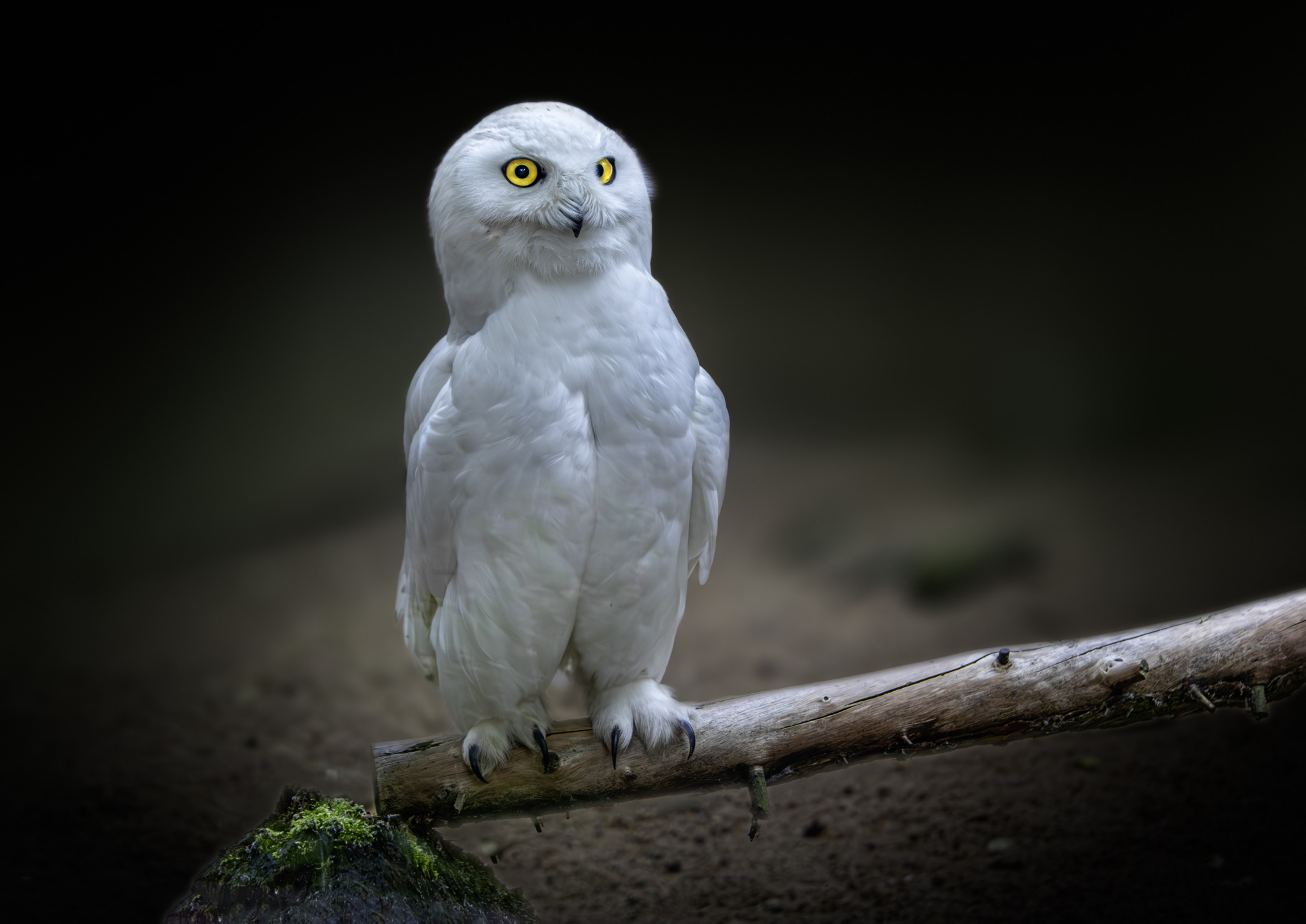Here’s a complete natural history overview of the Snowy Owl (Bubo scandiacus), one of the most iconic and spectacular owls of the far north:
Snowy Owl (Bubo scandiacus)
Taxonomy & Classification
- Kingdom: Animalia
- Phylum: Chordata
- Class: Aves
- Order: Strigiformes (owls)
- Family: Strigidae (typical owls)
- Genus: Bubo
- Species: B. scandiacus
General Description
- Size: 53–65 cm in length.
- Wingspan: 125–150 cm.
- Weight: 1.6–3 kg (females larger than males).
- Plumage:
- Striking white feathers provide camouflage in snowy habitats.
- Males: Become nearly pure white with age.
- Females & juveniles: Heavily barred with dark markings.
- Eyes: Large and yellow, set in a rounded white facial disk.
- Legs & feet: Thickly feathered, an adaptation to Arctic cold.
Behavior & Lifestyle
- Activity: Mostly diurnal, unlike most owls — hunts during the day in Arctic summers of continuous daylight.
- Hunting strategy: Hunts from perches or by flying low over tundra, using keen eyesight and hearing to detect prey.
- Temperament: Fierce and highly territorial; will aggressively defend nests against foxes, dogs, and even humans.
Diet
- Primary food: Lemmings and voles (one adult owl may consume 3–5 lemmings per day).
- Other prey: Arctic hares, waterfowl, seabirds, ptarmigan, fish, and carrion.
- Opportunistic — will take whatever prey is abundant in a given season.
Reproduction & Life Cycle
- Breeding season: May–June, synchronized with lemming population peaks.
- Nesting: Ground nest, usually a scraped depression on a rise or hummock.
- Clutch size: 3–11 eggs (large clutches in years with high lemming abundance).
- Incubation: ~32 days (by female, male provides food).
- Fledging: Young leave the nest after 5–6 weeks but may remain dependent for several more weeks.
- Parental care: Both parents defend chicks vigorously.
Habitat
- Breeds in Arctic tundra, open fields, and coastal plains.
- In winter, may migrate south to prairies, farmland, marshes, and shorelines.
Geographic Range
- Breeding: Arctic regions of North America, Europe, and Asia (circumpolar distribution).
- Winter: Nomadic; some remain in the Arctic, others move far south into Canada, northern U.S., Europe, and central Asia.
- Known for irruptions — sudden southward movements when food is scarce in the north.
Ecological Role
- Predator: Plays a crucial role in regulating small mammal populations (especially lemmings).
- Prey: Eggs and chicks may be taken by Arctic foxes, jaegers, and gulls.
- Indicator species: Populations fluctuate dramatically in relation to lemming cycles, reflecting Arctic ecosystem health.
Special Adaptations
- Feather insulation: Thick plumage covers even toes and claws, preventing frostbite.
- Coloration: Seasonal camouflage — white against snow; females’ barring provides added concealment for nesting.
- Nomadism: Can travel thousands of kilometers following prey cycles.
- Keen vision & hearing: Allows hunting in both bright Arctic daylight and low-light winter conditions.
Conservation Status
- IUCN Red List: Vulnerable.
- Population trend: Declining globally.
- Threats:
- Climate change altering lemming cycles and tundra ecosystems.
- Habitat disturbance from human expansion in the Arctic.
- Collisions with vehicles and power lines during winter movements.
- Conservation measures:
- Arctic habitat protection.
- Monitoring of breeding populations.
- Raising awareness during irruption years to reduce human conflict.
Interesting Facts
- Snowy owls can eat over 1,600 lemmings per year per breeding pair.
- Known for daytime hunting, unusual among owls.
- Made world-famous as Harry Potter’s owl, Hedwig (though Hedwig was depicted as a pure white male, despite being female in the books).
- One of the heaviest owl species in the world.
- Some individuals migrate unpredictably, showing no fixed wintering grounds.
Visited 890 times, 13 visit(s) today
Views: 2185
Subscribe to the newsletter:
